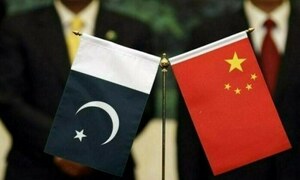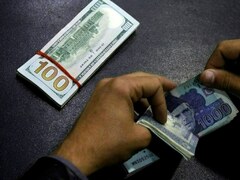A most striking feature of the Census 2017 is that around 66 percent of the population of Pakistan now lives in ten cities. This calls for research into the size and growth of the city economies. While the official agencies have avoided the territory of sub-national accounts completely, private researchers like Hafiz Pasha and Kaiser Bengali have come out with the estimates of provincial GDPs. The methodology employed in these researches can be extended to develop the estimates for the city economies. This has been done in the case of Lahore, the second largest city, in a study carried at the Lahore Chamber of Commerce and Industry, "The Size and Growth of the Economy of Lahore." A five-year reference period covering FY11-FY15 is used for comparative analysis.
First of its kind, this research finds the contribution of Lahore in the national and the Punjab economy. Here the focus is on Lahore itself. The limitations to the study must be recognized first to exercise caution in interpretation. First, it ignores the likely net transfer of incomes out of Lahore in the absence of relevant data trade and migration. Second, there is the problem of origin and provision in the case of nation-wide and province-wide activities. Third, FBR tax bases are used for sizing up the economic activity at the district level to cross-check.
Lahore was the second largest city of Pakistan in Census 1998. It retains that position in Census 2017. What is new is that it is the only city of Pakistan whose population has more than doubled in the intercensal period, from 5,143,495 to 11,126,285. With an urban population growth of 4.02 percent, the Lahore district is now 99 percent urban. As most data sources use district as a unit, this coincidence of the city and the district allows the use of the district data as a good approximation of the city economy.
In the constant prices of 2005-06, the total size of the economy of Lahore was Rs 945,694 million in FY 11. It rose to above a trillion rupees - Rs 1,227,139 million to be exact - in FY15. This is an average growth of 6.7 percent. As can be seen in Table 1, this level of growth is higher than Punjab, Punjab excluding Lahore, Pakistan, Pakistan excluding Punjab. While the country experienced a low growth of 3.9 percent, Lahore seems to have faced the problems related to agriculture and industry to a lesser degree.
=======================================================
Table 1. Average annual growth, FY11-FY15
=======================================================
Agriculture Industry Services GDP
=======================================================
Lahore 2.2 3.3 7.7 6.7
Rest of Punjab 1.7 4.8 5.8 4.6
Punjab 1.7 4.6 6.3 5.0
Rest of Pakistan 4.4 2.0 2.1 2.4
Pakistan 2.7 3.2 4.7 3.9
=======================================================
It will be seen in Table 1 that the highest growing sector in Lahore is the services sector. Its growth was 7.7 percent. Not only is this sector the highest growth sector, its share in Lahore's GDP is high and increasing. Table 2 reveals the share of services at 78.2 percent in FY11. The share rose to as high as 81 percent in FY15. Services sector consists of various economic activities, including wholesale and retail trade, transport, storage & communications, finance & insurance, housing services, general government services and other private services. In FY 15, transport, storage & communications had the largest share of 37.1 percent in the services sector, followed by wholesale and retail trade contributing 19.6 percent, housing services 16.5 percent and general government services 11.8 percent. The share of finance and insurance is small at 3.1 percent. Other private services have a share of 12 percent.
=======================================================
Table 2. Sectoral Composition of the Lahore economy (%)
=======================================================
Sector 2010-11 2014-15
=======================================================
Agriculture 4.9 4.1
Industry 16.9 14.9
Services 78.2 81.0
=======================================================
The highest growth did not originate from the largest subsector of transport, storage and communication. In line with the general public perception, housing is the most thriving business. The housing services in Lahore showed a double-digit growth of 12.3 percent between FY11 to FY15. Transport, storage and communication was the next highest, enjoying a healthy growth of 9.3 percent. Wholesale & retail trade subsector, the second largest, grew only by 0.9 percent.
Industrial sector occupies the second largest position in Lahore. It consists of the sub-sectors of mining and quarrying, large-scale manufacturing, small- scale manufacturing, slaughtering, construction, and electricity, gas & water. Lahore's industrial sector depends the most on manufacturing activity (73.4 percent), followed by construction (18.2) percent and electricity, gas & water (8.4). There is no activity of mining and quarrying in Lahore.
====================================
Table 3. Growth of Industrial Sector
in Lahore 2010-11 to 2014-15 (%)
====================================
Subsectors
====================================
Manufacturing 5.4
Construction 12.9
Electricity, gas & water -17.5
Overall 3.3
====================================
In line with housing services, construction is the highest growing activity in the industrial sector. The growth rate was 12.9 percent. The manufacturing sector of Lahore has shown a growth rate of 5.4 percent. Manufacturing includes large-scale manufacturing, small-scale manufacturing and slaughtering. Growth rate for large scale manufacturing was 4.3 percent per annum. Lahore showed a negative growth rate of 17.5 percent in electricity and gas distribution. The city suffers from a major energy deficit.
=========================================================================
Table 4 Average annual growth of agriculture by region 2010-11 to 2014-15
=========================================================================
Cropping Subsector Livestock Subsector Agriculture Sector
=========================================================================
Lahore -4.3 3.1 2.2
Punjab -0.2 3.4 1.7
Pakistan 1.9 3.5 2.7
=========================================================================
Agriculture is considered the mainstay of the economy of Pakistan. However, there is very little agriculture in Lahore district. Its share in Lahore's economy is less than one percent, with 89 percent of it contributed by livestock. Table 4 gives the average annual growth rate of agriculture sector for Lahore. The results reveal that the agriculture growth of Lahore and Punjab is below the national growth rate of 2.7 percent. The main reason for this poor performance of Lahore and Punjab is bad performance of cropping sector which shows a negative growth of -4.3 and -0.2 percent respectively. The agriculture sector of Lahore grew at the rate 2.2 percent as compared to 1.7 percent for Punjab, mainly because of 3.1 percent growth in the livestock subsector.
A shift from manufacturing to the services sector has been the most notable feature of urban growth and development the world over. Lahore is no exception. The need is to understand the policy implications of the rising share and growth of services. It challenges the existing urban governance and planning practices. Autonomous and self-governing cities are a better environment for growth. Services growth creates employment and promotes enterprise and innovation. Density rather than sprawl is much better for realizing the economies of scale and agglomeration. It makes the city more productive. As Edward Glaeser aptly put it: "There is no such thing as a poor urbanized country and there is no such thing as a rich rural country."
(The writer is Director, Research and Development, Lahore Chamber of Commerce and Industry. She has 20 years of experience in teaching and research in universities at home and abroad)






















Comments
Comments are closed.